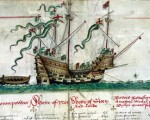
How much do you know about the Tudor period and what happened when? Grab yourself a coffee and test yourself with this fun quiz. Good luck!
[Read More...]
How much do you know about the Tudor period and what happened when? Grab yourself a coffee and test yourself with this fun quiz. Good luck!
[Read More...]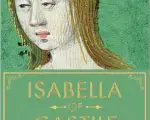
I’ve just received an email from Giles Tremlett about his latest book Isabella of Castile: Europe’s First Great Queen, which I know many of you will be interested in. His book on Catherine of Aragon was excellent.
Here’s what Giles says about his book:
“This week my latest book, a 625-page biography of Isabella of Castile, is published by Bloomsbury in the United Kingdom. It will be out in the United States on March 7 and will be available in Spanish and Chinese before year’s end. Early reviews from the US specialist book trade magazines are promising: “Magisterial… sublime presentation of facts and interpretation,” (Booklist); “highly readable, engrossing biography” (Library Journal) etc… Reviews will begin to appear in major UK papers next week.
[Read More...]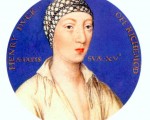
In this week’s video, author Sarah Bryson talks about Henry VIII’s mistress, Elizabeth (Bessie) Blount and the son she had by the king, Henry Fitzroy, Duke of Richmond and Somerset.
[Read More...]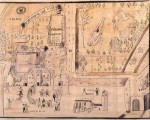
On this day in history, the 10th February 1567, Henry Stuart, Lord Darnley was murdered at Kirk o’ Field, Edinburgh, in the Royal Mile, just a few hundred yards from Holyrood House where his wife, Mary Queen of Scots, and baby son, the future James VI/I, were staying.
[Read More...]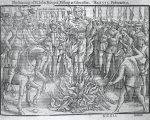
On this day in history, 9th February 1555, the burnings of two prominent Protestant churchmen took place.
John Hooper, Bishop of Gloucester and Worcester, was burned at the stake in Gloucester. He had been deprived of his bishopric in March 1554, due to his marriage. Rowland Taylor, Rector of Hadleigh in Suffolk, Canon of Rochester Cathedral, Archdeacon of Bury St Edmunds, Archdeacon of Cornwall and former chaplain to Thomas Cranmer, Archbishop of Canterbury, was burned on Aldham Common, near Hadleigh. Both men were executed as part of Queen Mary I’s persecution of Protestants.
[Read More...]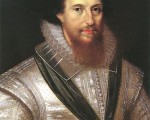
On this day in history, Sunday 8th February 1601, Robert Devereux, 2nd Earl of Essex, his supporters and two hundred soldiers gathered at Essex House. Essex then marched into the city crying “For the Queen! For the Queen! The crown of England is sold to the Spaniard! A plot is laid for my life!”. However, the people ignored him and stayed indoors.
Essex was forced to give up after his supporters deserted him, and he surrendered after Lord Admiral Nottingham threatened to blow up his house if he did not give himself up.
Thomas Birch gives an account of the failed rebellion in his book…
[Read More...]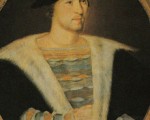
In this month’s look at the men of Henry VIII’s court, I want to explore the life of William Carey, courtier, a member of the king’s privy chamber, and an esquire of the body. William Carey is most famously known for being the husband of Mary Boleyn, older sister of Anne Boleyn. However, he was more than just a husband; he was a man on the rise and distant cousin to the King.
There is little known about William Carey’s early life. He appears to be the second son of Thomas Carey from Chilton Foliat, Wiltshire, and his wife Margaret, daughter of Sir Robert Spencer of Ashbury, Devon. The family had strong Lancastrian ties as William’s grandfather, Sir William Carey of Cockington, Devon, on his father’s side, was a Lancastrian supporter and soldier who was beheaded at Tewkesbury in 1471. William’s grandmother on his mother’s side was Eleanor Beaufort, daughter and coheir of Edmund Beaufort, Duke of Somerset. The Duke of Somerset was a staunch Lancastrian supporter and right-hand man of King Henry VI. It was rumoured that Somerset even had an affair with the King’s mother, Catherine Valois, who was also the grandmother of King Henry VII! Through his mother’s side, William Carey was a distant cousin of King Henry VIII.
[Read More...]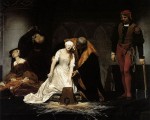
On this day in history, 6th February…
1557 – The remains of reformers Martin Bucer and Paul Fagius were exhumed and publicly burned, after being posthumously found guilty of heresy. They were burned, along with their books, on Market Hill in Cambridge.
1561 – Baptism of Tailboys Dymoke (pseudonym Thomas Cutwode) at Kyme in Lincolnshire. He was the son of Sir Robert Dymoke, and his wife, Bridget (née Clinton). Dymoke is known for his allegorical poem, Caltha poetarum, or, “The Bumble Bee”, which he published under the name of Thomas Cutwode.
1585 – Death of Edmund Plowden, lawyer, legal scholar and law reporter, in London. He was laid to rest in the Middle Temple Church. Cambridge University libraries and the British Library contain manuscripts of his commentaries and opinions, and he is known for his 1571 “ Les comentaries ou les reportes de Edmunde Plowden” volume of law reports covering cases during the reigns of Edward VI, Mary I and Elizabeth I.
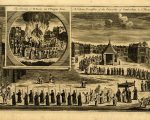
On this day in history, Saturday 6th February 1557, in the reign of Queen Mary I, the remains of reformers Martin Bucer and Paul Fagius were exhumed and publicly burned after the two men were posthumously found guilty of heresy.
Paul Fagius had died of plague in 1549 and had been laid to rest in St Michael’s Church, Cambridge, and Martin Bucer had died of tuberculosis in 1551 and had been laid to rest in the Church of Great St Mary’s in Cambridge.
[Read More...]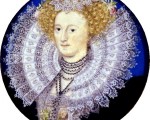
How much do you know about some of the prominent or famous women of the Tudor period? Test your knowledge with this fun quiz by Rebecca Larson.
[Read More...]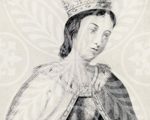
In this month’s expert talk, Lauren Browne discusses the reputations and representations of Eleanor of Aquitaine and Eleanor of Castile in the Tudor period.
[Read More...]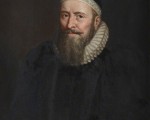
On this day in history, 4th February 1555, John Rogers, clergyman and Biblical editor, was burned at the stake at Smithfield.
Rogers was the first English Protestant burned in Mary I’s reign after being condemned as a heretic. he refused the chance of a last-minute pardon if he recanted, and died bravely. His wife and eleven children, one being newborn and at the breast, attended his burning. Martyrologist John Foxe recorded that Rogers “constantly and cheerfully took his death with wonderful patience, in the defence and quarrel of the Gospel of Christ.”
[Read More...]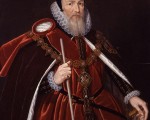
On this day in 1587, the Privy Council met in William Cecil, Lord Burghley’s chambers at Greenwich and agreed to send Mary, Queen of Scots’ signed death warrant to Fotheringhay. Burghley appointed the Earls of Shrewsbury and Kent to direct the execution, and the council agreed to keep Elizabeth in the dark until the deed was done.
[Read More...]
In today’s Claire Chats video, I talk (or perhaps ramble!) about what made a marriage legal and binding in the medieval and Tudor periods.
[Read More...]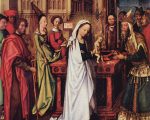
Yes, today is Candlemas, or the Feast of the Presentation of Christ in the Temple and the Purification of the Blessed Virgin. It commemorates the purification (or churching, as medieval people would have seen it) of the Virgin Mary forty days after the birth of Jesus Christ, when it was traditional for the mother to make an offering or sacrifice according to Jewish law, and the presentation of the baby Jesus at the temple in Bethlehem. It is the end of the liturgical season of Christmas tide and Candlemas Eve was also time to take down any Christmas decorations that you hadn’t taken down on Twelfth Night.
[Read More...]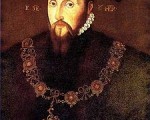
On this day in history, Tuesday 1st February 1547, the executors of Henry VIII’s will appointed Edward Seymour, Earl of Hertford, to the offices of Lord Protector of the Realm and Governor of the King’s Person.
Here is the record from Acts of the Privy Council:
[Read More...]